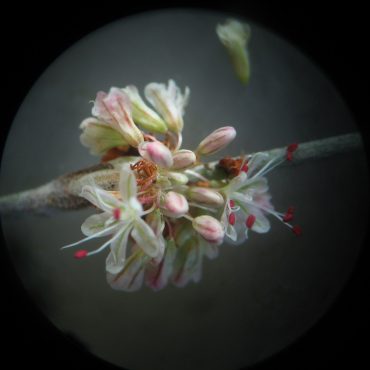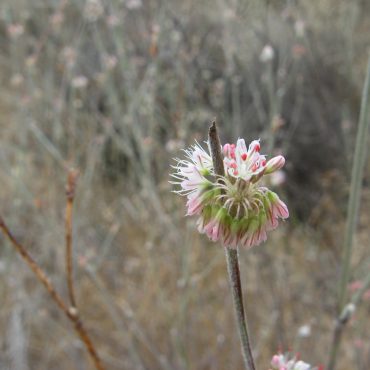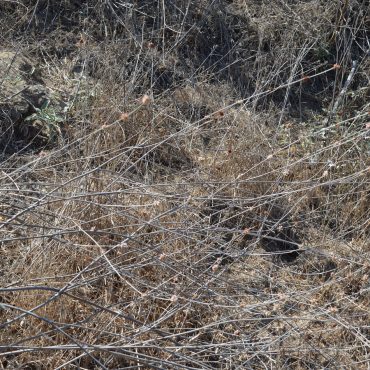Long-stem buckwheat (Eriogonum elongatum) is a widely spread California native that is related to the well-known shrubby California buckwheat (E. fasciculatum), one of the dominant species in the coastal sage scrub. Unlike its relative, however, long-stem buckwheat is often overlooked. Each plant produces a few long, delicate, wanding stems that are adorned with small clusters of pale flowers. The stems and flowers take up so little space that even a dense patch easily escapes notice—until the sun strikes from just the right angle, turning the small flower clusters into glowing fireflies.
Long-stem Buckwheat
Eriogonum elongatum
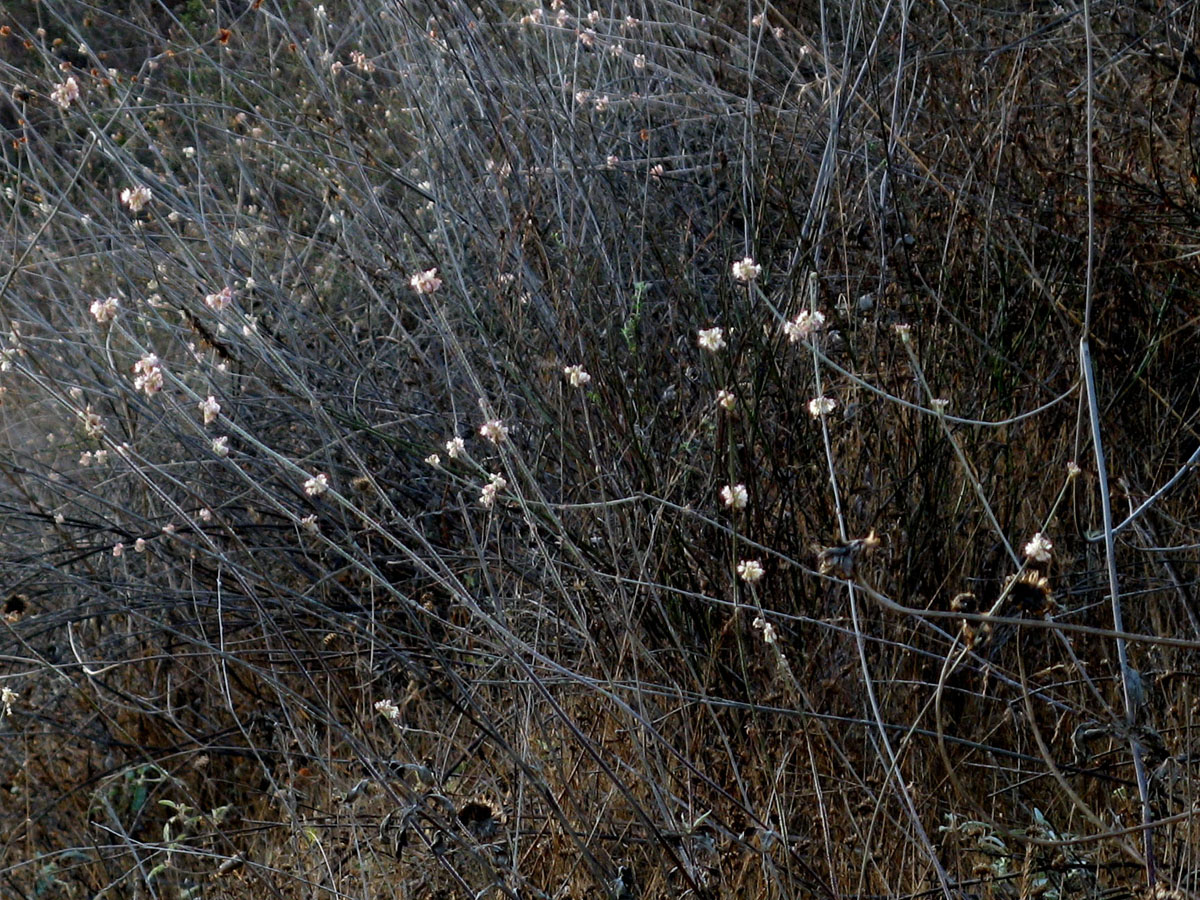
Other Common Names:
tall buckwheat, wand buckwheat, long stemmed buckwheat
Description 4,11,34,59
Long-stem buckwheat is a perennial herb that stands erect to five feet (1.6 m) in height or spreads and leans sideways. There are generally several main stems from a deep taproot. The thin stems are sparsely branched and green, usually appearing gray due to a covering of long whitish hairs. The plant dies back in the winter.
Leaves are confined to the lower portion of the plant and are often dry and shriveled or fallen at flowering time. Leaves are ovate to narrowly lanceolate, 1/2 to 2 inches (1-5 cm) long, tapering to short petioles. Margins are wavy, smooth or irregularly toothed. The leaves appear whitish due to a dense covering of long hairs, especially on the lower leaf surfaces.
Flowers occur in knob-like clusters distantly spaced along the long, leafless stems. Flowers are radially symmetrical, bisexual and about 1/10 inch (3-4 mm) across, extending beyond the cluster on short pedicels and drooping downward with age. Sepals resemble petals; collectively they are called tepals. There are six tepals in two whirls, forming a narrow funnel that is topped with six equal lobes. Tepals are white or pinkish with a green midstripe that ages rose. There are nine stamens, extending beyond tepals. The anthers are a deep rose, the pollen is whitish. The single pistil has three white styles with minute pink stigmas. The ovary is superior, ovoid and three-angled. Within a cluster, flowers are often of different ages, some still buds, some blooming and others developing fruit. Tepals often remain on the flower after pollination, turning a rich brown color and enclosing the developing one-seeded fruit. The main flowering time is August through November.1
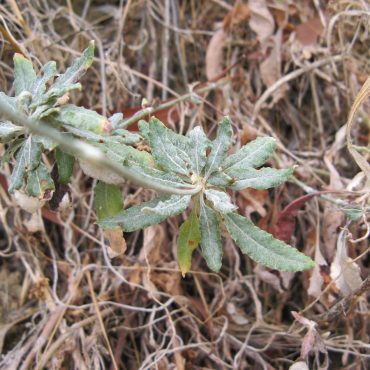
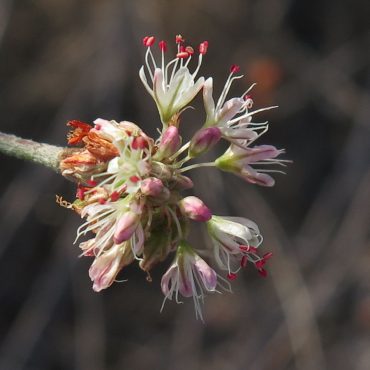
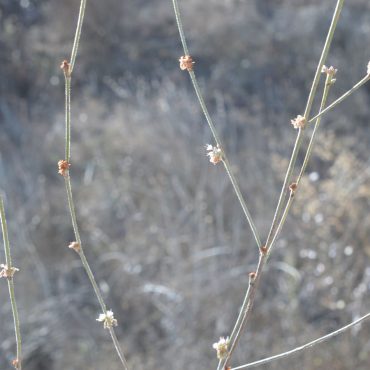
Distribution 7,11,34,59,89
Long-stem buckwheat is a California native that is found west of the mountains from Monterrey Bay south into Baja California. It prefers dry, rocky or sandy places within a variety of vegetation types, especially coastal sage scrub, chaparral and disturbed areas below 4000 feet (1250 m).
In the Reserve, many plants grow along the south side of the Central Basin, in and around the same broad valley as the sea dahlias (Leptosyne maritima), which bloom in early spring.
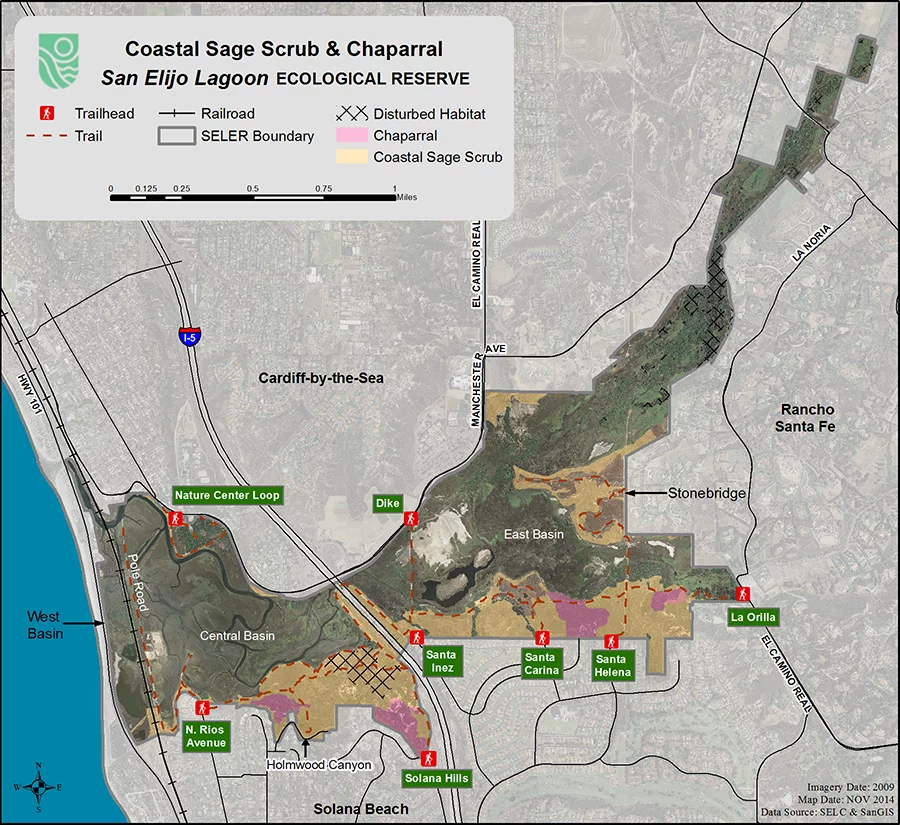
Classification 2,11,44
Long-stem buckwheat is a dicot angiosperm in the buckwheat family (Polygonaceae). In this family, leaves are generally simple (not divided into leaflets) and alternate. Typically, flowers are tiny, symmetrical and clustered closely together. Sepals and petals are similar (called tepals), in two whorls of 3-6 tepals. The ovary is superior and the fruit is usually shaped like a three-cornered pyramid, small, dry and 1-seeded.44 After flowering, the tepals may remain, encompassing the developing fruit and turning chestnut brown.
Other familiar species in the buckwheat family include rhubarb and sorrel as well as true buckwheat, which is a Eurasian species only distantly related to our species.
Eriogonum is the largest dicot genus in California.24,59 In 2017, there were over 115 recognized species and even more named varieties.2,7 Four species have been reported from the Reserve. Others are California buckwheat (E. fasciculatum), Slender buckwheat (E. gracile) and bluff buckwheat (E. parvifolium).48
There are three varieties of long-stem buckwheat, but only one, var. elongatum, occurs in California. The other two grow further south in Baja California.353
Jepson eFlora Taxon Page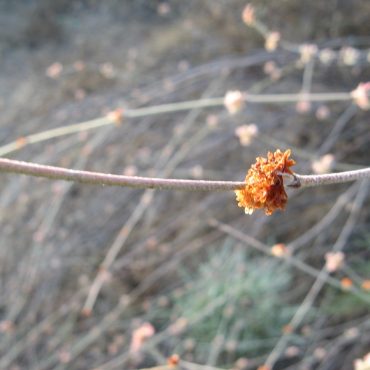
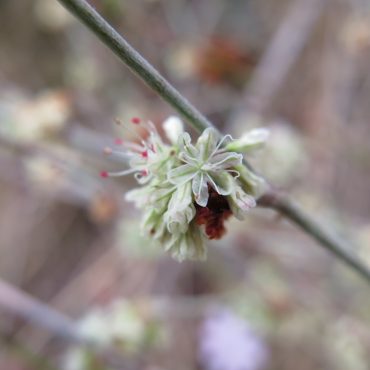
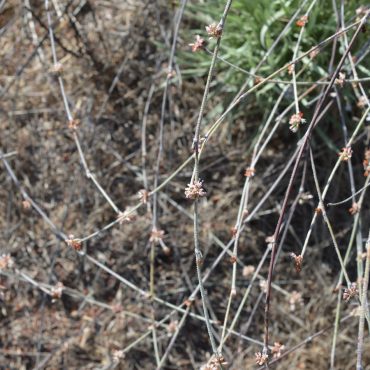
Ecology 359
Most of us think of a plant’s leaves as the sole location of photosynthesis. In fact, long-stem buckwheat has chlorophyll in its stems as well. This is not uncommon especially in plants adapted to desert and Mediterranean climates where stems, which generally have greater water-use efficiency than the leaves, may contribute a significant portion of the total photosynthesis. Thus stem photosynthesis appears to be an adaptation to seasonally dry conditions.
In the Reserve, other green-stemmed plants include slender buckwheat (Eriogonum gracile), deerweed (Acmispon glaber), rock rose (Crocanthemum scoparium) and twiggy wreath plant (Stephanomeria spp.)—all plants that often drop their leaves during the onset of the dry summer. After leaf fall, the stems continue to photosynthesize, allowing the plant to bloom and set seed.
Cactus such as western prickly pear (Opuntia cf. x occidentalis) have developed stem photosynthesis to an extreme, losing their leaves entirely and relying instead on chlorophyll within their enlarged fleshy stems. The Palo Verde (Parkinsonia florida), a tree of the Sonoran Desert that drops its leaves during the dry season is named for its green trunk and branches.217 Other plants produce chlorophyll and photosynthesize in their flowers or developing fruit, although the benefits are thought to be different; some orchids even photosynthesize in their roots.
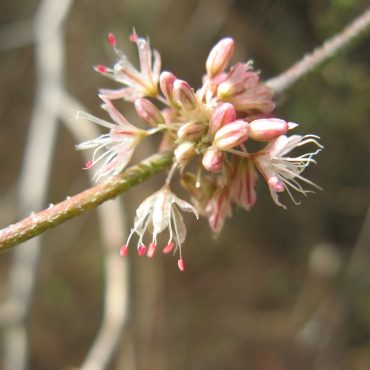
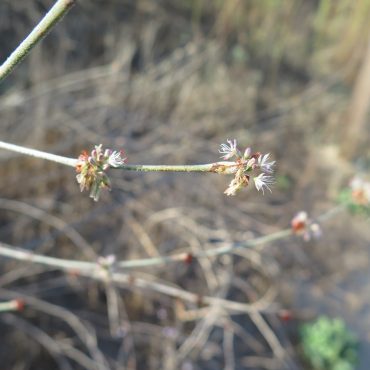
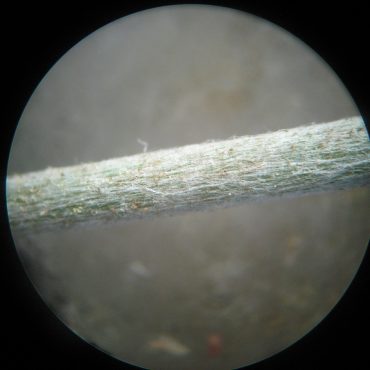
Human Uses
Species in the genus Eriogonum have been described as “homely and gentle plants, with mild, well-defined uses and no toxicity.293There is a report specifically of long-stem buckwheat being used as a blood tonic282 and as a medicinal tea to stop a hemorrhage.360 There is a curious report that the Tubatulabal, a tribe in the Sierra Nevadas, used the tubular stems of long-stem buckwheat to collect and roast juice for chewing gum.282
Although long-stemmed buckwheat is not often found in native gardens, it is occasionally recommended for the nectar-rich flowers, which attract a variety of beneficial insects,11,26,169 and for the long tap roots, which provide erosion control.361 “This plant could probably grow in a rain gutter with no care.”169
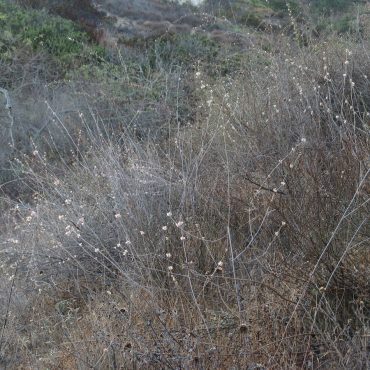
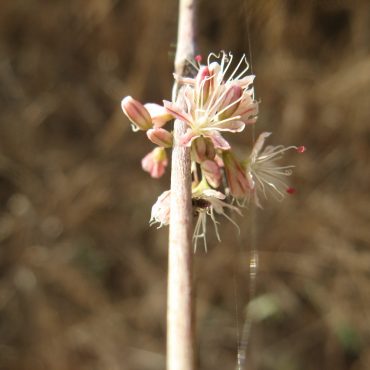
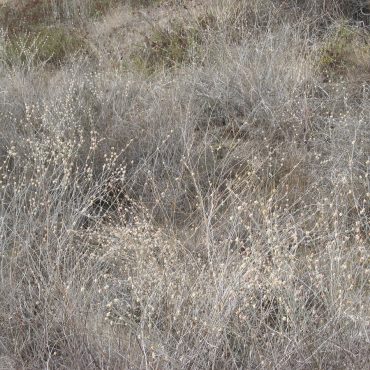
Interesting Facts
In Greek, the genus name, Eriogonum, may be translated as “hairy knees,” in reference to the hairy or woolly joints of some of the species of the genus;21 , however, this is not a particularly apt description of our species. The specific name, elongatum, may refer to the long distances between the flower clusters on the wanding stems.59
